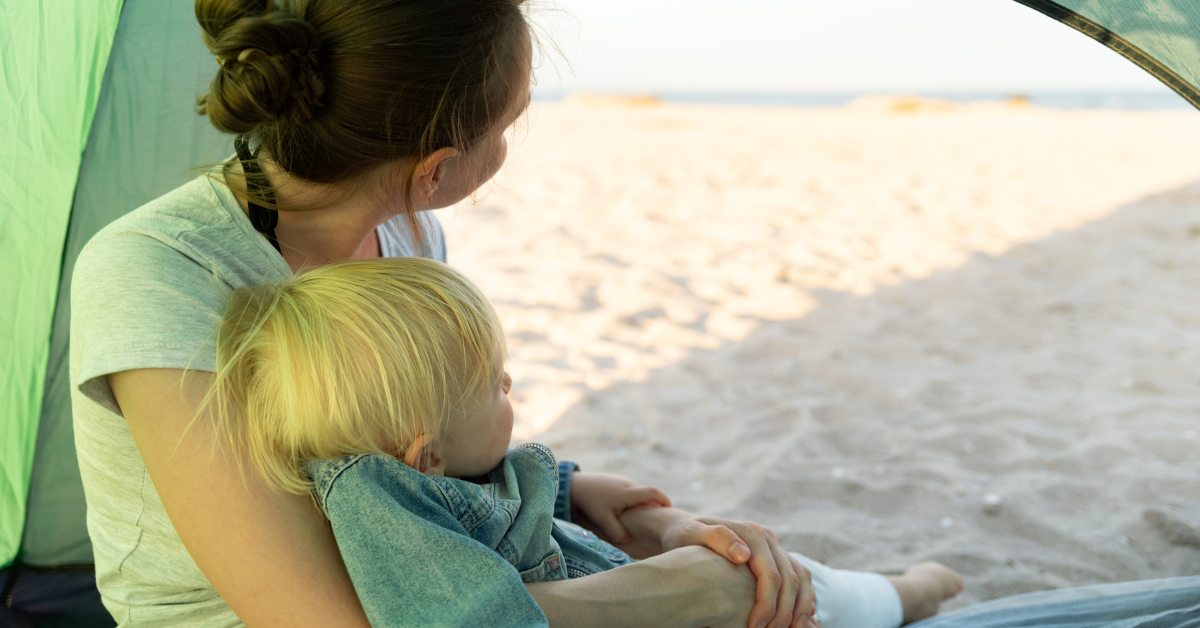Camping with Your Baby
Whether you prefer to spend your summers in a tent, trailer, or cottage, you can keep the sleep rolling even when you’re roughing it. You’ll have to be a little flexible but there’s no reason you can’t all sleep well when you’re away from home. Read on to find out how…
Travel Beds
Provided your child is over 3 months of age and knows how to fall asleep in their own bed, bring a bed for them along with you. The best travel beds for babies are playards (AKA: Pack n Play) or a baby sleep tent (AKA: Pea Pod). Kids over 3 years just need a mattress or Thermarest with a sleeping bag.
(And if your child is not comfortable falling asleep in their own bed or sleep isn’t easy and enjoyable, we should chat! Book a complimentary call: chatwithsierra.com.)
Later Bedtimes
There’s nothing wrong with putting your child to bed a little later every now and then. If it’s a few nights in a row, best not to exceed 30 minutes later than normal, but if it’s a one-off occasion, no big deal. Just be sure that most nights, you baby or child under 5 years of age is getting 11.5 - 12 hours of sleep. This ensures that exceptions can be made without any real fallout.
making bedtime happen
Wherever you’re going, bring along your bedtime routine. Once your child sees that PJs, teeth, and story are still happening they’ll know that sleep time is also coming soon. There may not be a bath but you can still wipe down face and hands and have a snuggle by the fire or during stories. Excitement levels might be a little heightened, so having a relatively normal wind down routine will only help.
If your child is used to you leaving the room before they’re asleep then you can do this when you’re away from home too. We don’t lose our ability to fall asleep just because we’re in a new environment.
If your child is unsure about you leaving the room or the tent you can lie down on your bed until they’re asleep but if this increases the energy or the antics simply offer to come back and check on them as long as they lie quietly in bed and then follow through with a brief and boring check back before they’re asleep.
make it night when it’s light
If it’s simply too light for your child to fall asleep, you can cover their pack n play or sleep tent with a towel or blanket as long as you stay awake nearby. Once they’re asleep, as soon as they’re asleep you should remove the cover. You can also purchase pack n play covers made specifically for this purpose.
Keep the Bugs off
It’s best to avoid DEET-based insect repellents on infants younger than six months. Even for older babies, you’ll want to use repellants sparingly, so it helps to have some natural, non-toxic repellant and lightweight bug netting (some double as UV protection too) that can be stretched over a child-carrier backpack, travel crib, or baby seat. Having a big family-sized tent also gives everyone a cozy place to escape the bugs, which is particularly nice for nursing and sleeping.
don’t forget
Be sure to pack Benadryl, After Bite, and infant pain relief medication, just in case. It never hurts to have a thermometer and a couple extra diapers and wipes too!
Now get out there and share the adventures you love with your children!
Happy memory-making,
Sierra


